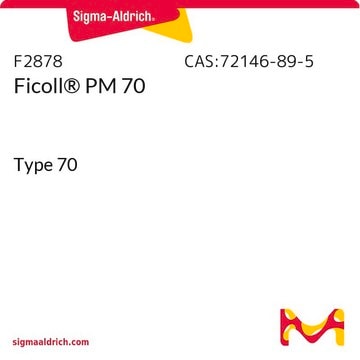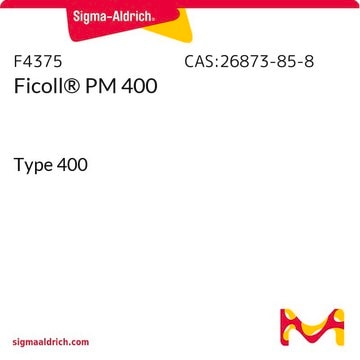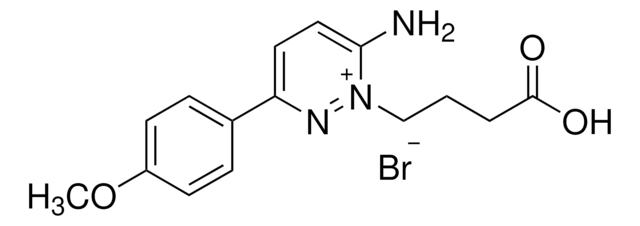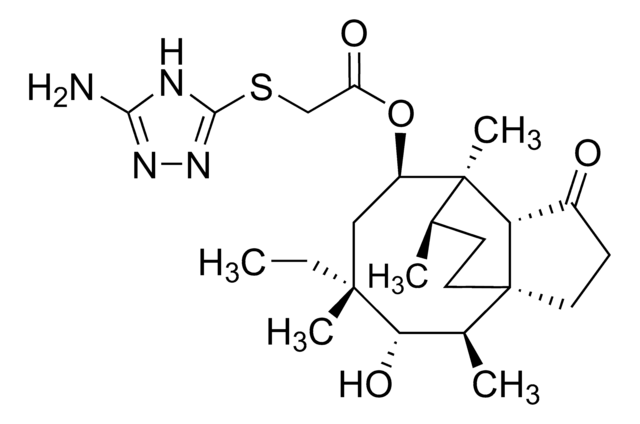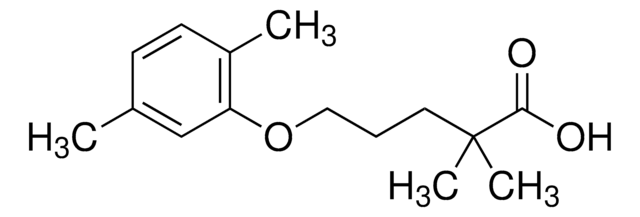T6069
Thio-TEPA
Synonym(e):
N,N′,N″-Triethylenethiophosphoramide, Thio-Tep, Thiofozil, Thiotef, Tio-tef, Tiofosfamid, Tiofosyl, Tiofozil, Tris(aziridinyl)phosphine sulfide
About This Item
Empfohlene Produkte
Form
solid
Lagerbedingungen
(Keep container tightly closed in a dry and well-ventilated place.)
Farbe
white
Wirkungsspektrum von Antibiotika
neoplastics
Wirkungsweise
DNA synthesis | interferes
Lagertemp.
2-8°C
SMILES String
S=P(N1CC1)(N2CC2)N3CC3
InChI
1S/C6H12N3PS/c11-10(7-1-2-7,8-3-4-8)9-5-6-9/h1-6H2
InChIKey
FOCVUCIESVLUNU-UHFFFAOYSA-N
Suchen Sie nach ähnlichen Produkten? Aufrufen Leitfaden zum Produktvergleich
Verwandte Kategorien
Allgemeine Beschreibung
Anwendung
Biochem./physiol. Wirkung
Hinweis zur Analyse
Sonstige Hinweise
Signalwort
Danger
H-Sätze
Gefahreneinstufungen
Acute Tox. 2 Oral - Carc. 1B
Lagerklassenschlüssel
6.1A - Combustible acute toxic Cat. 1 and 2 / very toxic hazardous materials
WGK
WGK 3
Persönliche Schutzausrüstung
Eyeshields, Faceshields, Gloves, type P3 (EN 143) respirator cartridges
Analysenzertifikate (COA)
Suchen Sie nach Analysenzertifikate (COA), indem Sie die Lot-/Chargennummer des Produkts eingeben. Lot- und Chargennummern sind auf dem Produktetikett hinter den Wörtern ‘Lot’ oder ‘Batch’ (Lot oder Charge) zu finden.
Besitzen Sie dieses Produkt bereits?
In der Dokumentenbibliothek finden Sie die Dokumentation zu den Produkten, die Sie kürzlich erworben haben.
Kunden haben sich ebenfalls angesehen
Unser Team von Wissenschaftlern verfügt über Erfahrung in allen Forschungsbereichen einschließlich Life Science, Materialwissenschaften, chemischer Synthese, Chromatographie, Analytik und vielen mehr..
Setzen Sie sich mit dem technischen Dienst in Verbindung.


